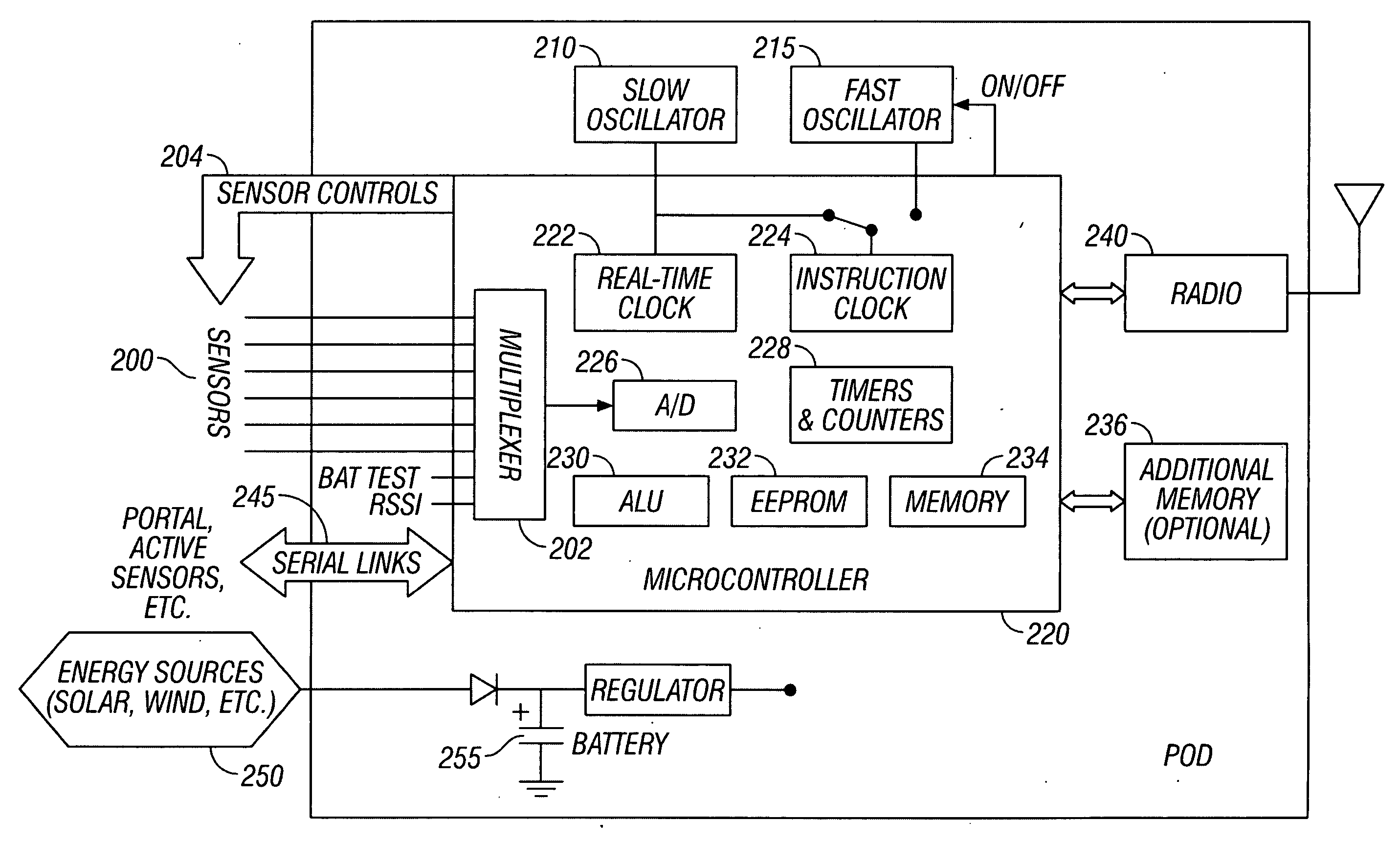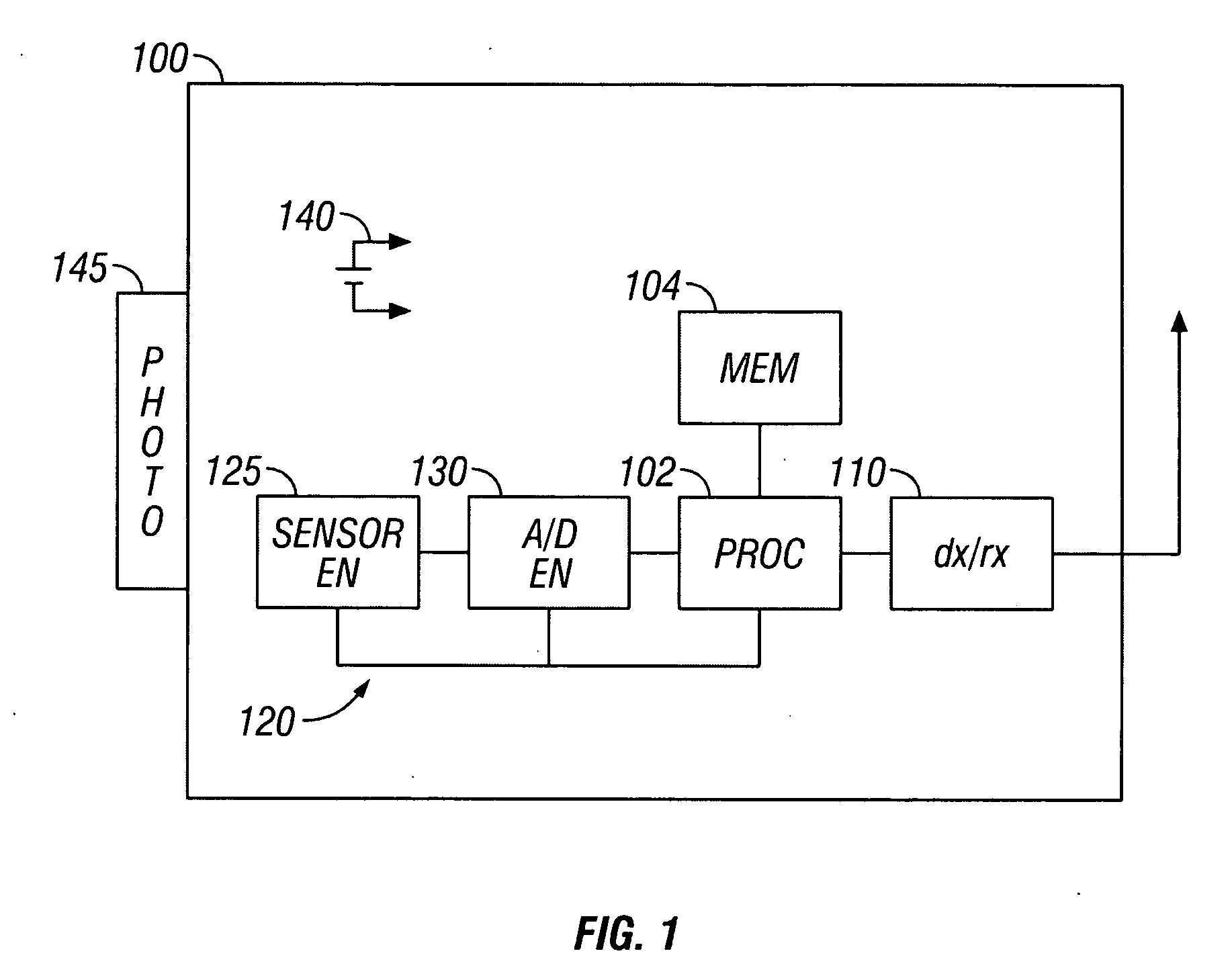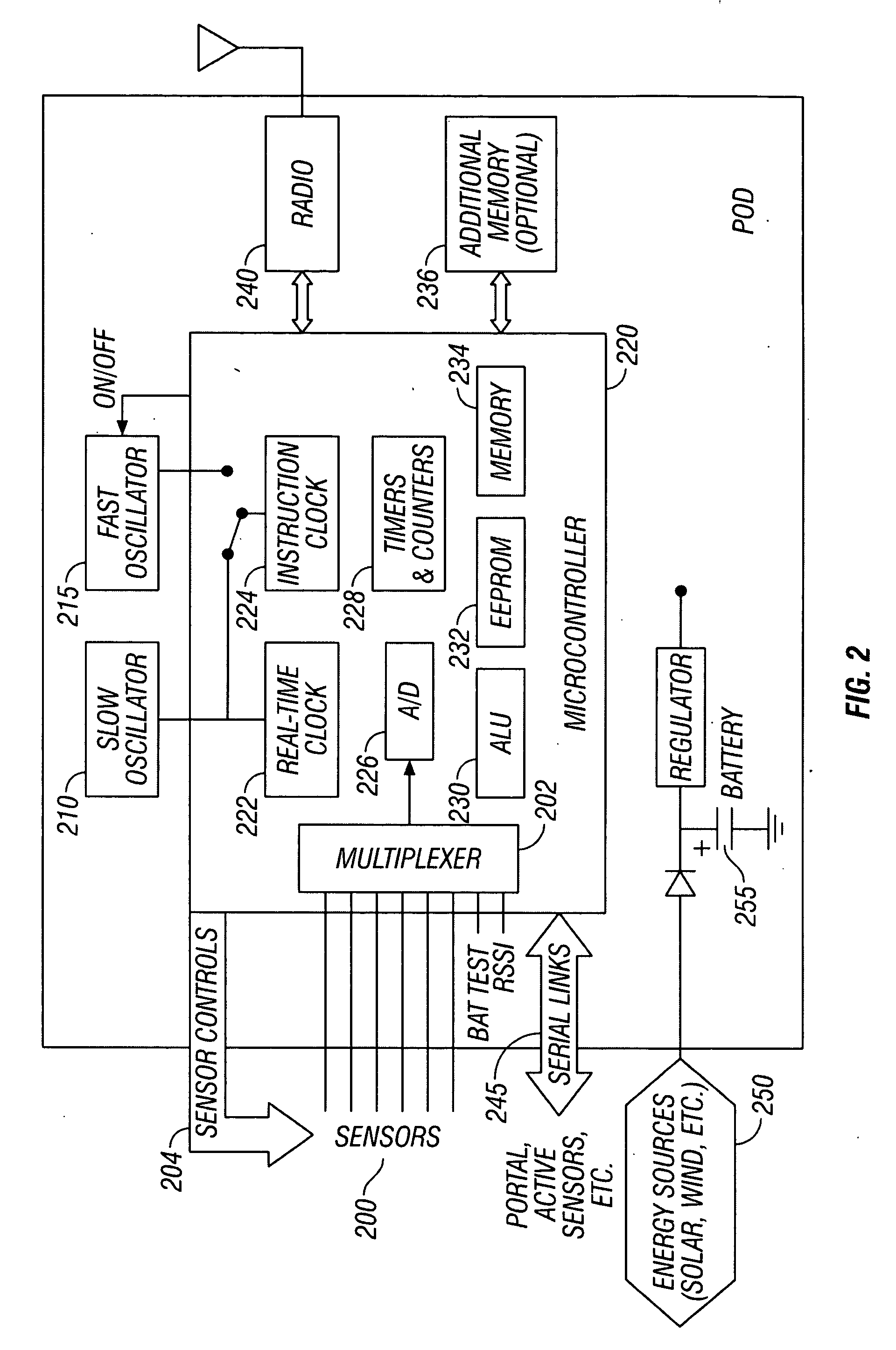Sensor Web
a technology of sensors and webs, applied in the field of sensors webs, can solve the problems of loss of any further data from the environment, the inability of redundant sensors to provide additional information, and the limited application of devices, so as to achieve better and more accurate environmental awareness
- Summary
- Abstract
- Description
- Claims
- Application Information
AI Technical Summary
Benefits of technology
Problems solved by technology
Method used
Image
Examples
Embodiment Construction
[0027] The present application describes a number of Sensor Web nodes, which are typically wirelessly interconnected and communicate to form a macroinstrument from the groups of nodes. Each “node” on a Sensor Web can be either a specific individual pod, or another sensor web itself. The nodes can communicate amongst themselves. The communication causes distribution of information throughout the instrument as a whole. Throughout the description that follows, it is assumed that the nodes are pods, but it should be understood that the nodes can also be webs themselves.
[0028] Much as the intelligence in the brain is a result of the myriad of connections between dendrites, the Sensor Web effectively forms a macrointelligence as a result of the distributed information with the collection of pods reacting and adapting to their environment. The synergy between the pods provides information that is more than would be available from any of the pods individually. For example, the sensors coll...
PUM
 Login to View More
Login to View More Abstract
Description
Claims
Application Information
 Login to View More
Login to View More - R&D
- Intellectual Property
- Life Sciences
- Materials
- Tech Scout
- Unparalleled Data Quality
- Higher Quality Content
- 60% Fewer Hallucinations
Browse by: Latest US Patents, China's latest patents, Technical Efficacy Thesaurus, Application Domain, Technology Topic, Popular Technical Reports.
© 2025 PatSnap. All rights reserved.Legal|Privacy policy|Modern Slavery Act Transparency Statement|Sitemap|About US| Contact US: help@patsnap.com



